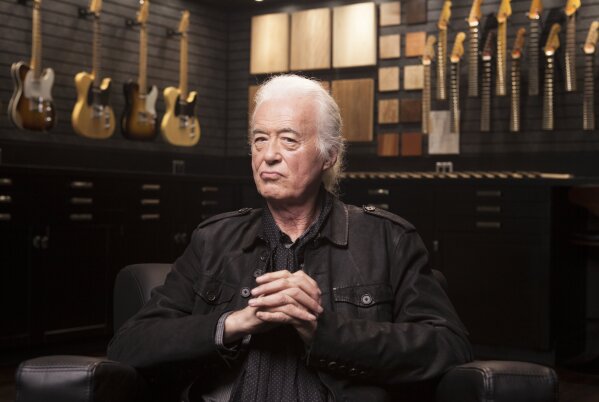
It takes a lot for Jimmy Page to be stumped. After all, he’s the man who had the world on strings for years with his guitar playing. Even before Led Zeppelin burst onto the scene in 1969, Page had been pushing the six-string to new heights with The Yardbirds. After Led Zep’s tragic end, he committed to a host of projects that maintained the indisputable status he formed with them.

Page refined his technical and imaginative approach during his verdant period as one of London’s most sought-after session players in the 1960s. This not only opened him to the endless possibilities offered by songwriting and production but also saw him conceive his idea of making rock music much darker and atmospheric than it was at the time.
Being a session musician working with the best of the era gave him first-hand experience with the complexities of bringing popular music to life and a holistic view of its contemporary state in terms of positives and pitfalls. This meant that when Page joined The Yardbirds in 1966, he knew exactly what he wanted to achieve and exactly how he would do it. This period of two years, which saw him form a brief but consequential dual assault with close friend Jeff Beck, grabbed rock by the scruff of the neck and turned it to its future.
This boldness set the scene for Led Zeppelin, who emerged from The Yardbirds’ ashes and saw the maturing Page unlock the door to his fate with his scintillating guitar work, songwriting and production. By the time the group released Led Zeppelin IV in 1971, they were the biggest and most exciting band on Earth. With The Beatles gone and Jimi Hendrix tragically passing away the previous year, Jimmy Page was the greatest around. From pioneering punk on ‘Communication Breakdown’ to the glistening technical mastery of ‘Stairway to Heaven’, he innovated in an array of ways.
Given his long list of achievements on the fretboard and immense experience in playing, you’d think that Page would possess such a berth of wisdom that he couldn’t be surprised by anything. However, one man left him stunned: Clarence White of The Byrds. White was drafted in to replace the outgoing Gram Parsons in 1968 and played a significant role in their move from psychedelia to country rock until their 1973 split.
A hallmark of this era with White is the use of the B-Bender, a string-bending device that the guitarist invented alongside multi-instrumentalist and fellow Byrd, Gene Parsons. White and Parsons are so conjoined with the device that it is commonly known as the ‘Parsons/White B-Bender’.
When speaking to Guitar Player in 2023, Page revealed how he was left stumped by the sound of the B-Bender on The Byrds’ 1970 (Untitled) live album. The first time he heard it, the world-famous guitarist thought to himself, “I don’t know how it’s done.”
“I heard the Byrds’ [1970] Untitled album – it’s a live album – and I thought, What the hell is he doing?” He recalled: “You can hear Clarence use it on the Byrds’ Sweetheart of the Rodeo, but the live album is where I first heard it and thought, I can’t fathom this out – I don’t know how it’s done.”
As a guitarist who prided himself in being at the forefront of innovations, it didn’t take long before Page got his hands on a B-Bender. He used it across the latter stages of Led Zeppelin, including on their final albums, In Through the Out Door and Coda.
Leave a Reply